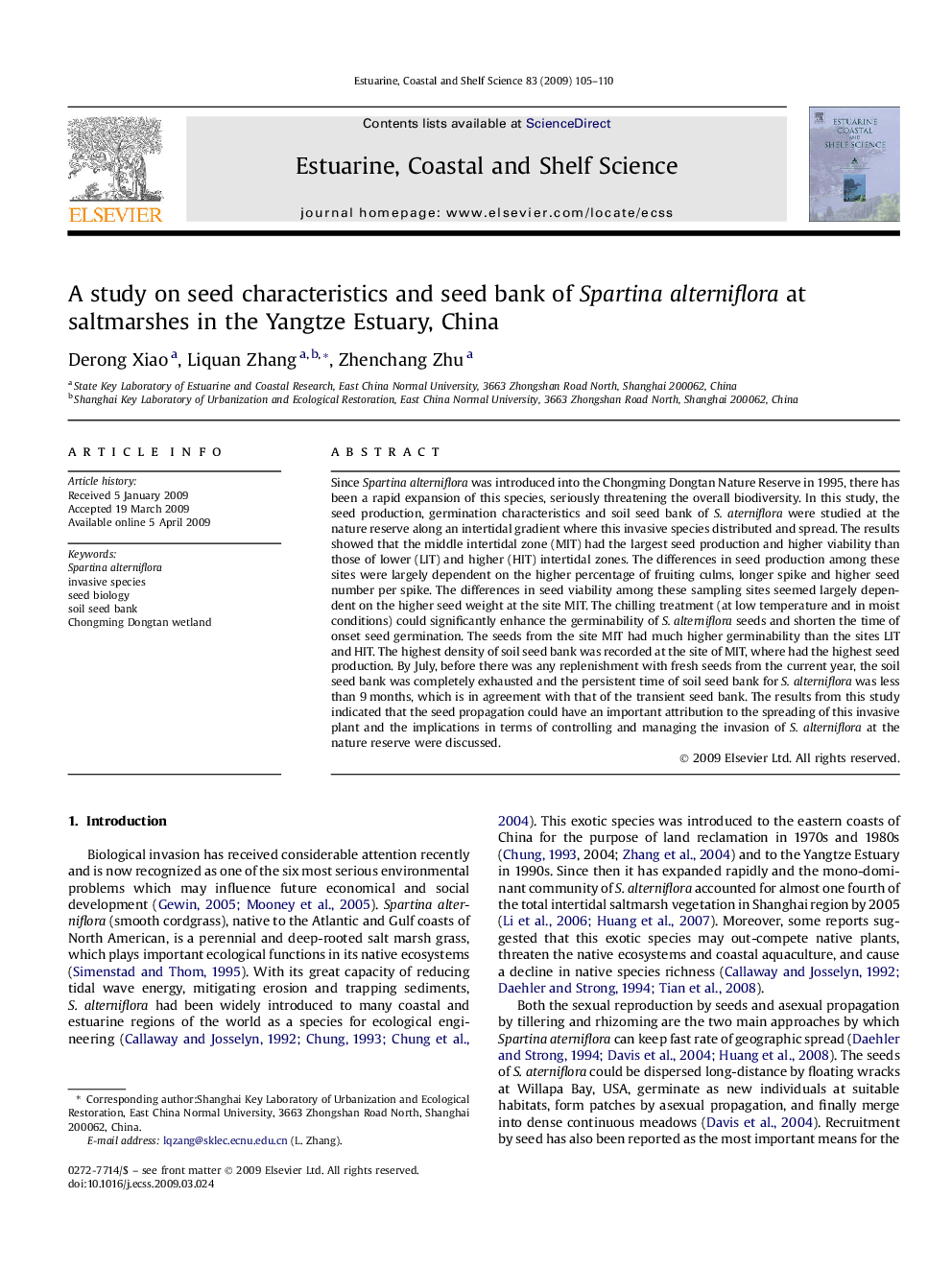| Article ID | Journal | Published Year | Pages | File Type |
|---|---|---|---|---|
| 4541380 | Estuarine, Coastal and Shelf Science | 2009 | 6 Pages |
Since Spartina alterniflora was introduced into the Chongming Dongtan Nature Reserve in 1995, there has been a rapid expansion of this species, seriously threatening the overall biodiversity. In this study, the seed production, germination characteristics and soil seed bank of S. aterniflora were studied at the nature reserve along an intertidal gradient where this invasive species distributed and spread. The results showed that the middle intertidal zone (MIT) had the largest seed production and higher viability than those of lower (LIT) and higher (HIT) intertidal zones. The differences in seed production among these sites were largely dependent on the higher percentage of fruiting culms, longer spike and higher seed number per spike. The differences in seed viability among these sampling sites seemed largely dependent on the higher seed weight at the site MIT. The chilling treatment (at low temperature and in moist conditions) could significantly enhance the germinability of S. alterniflora seeds and shorten the time of onset seed germination. The seeds from the site MIT had much higher germinability than the sites LIT and HIT. The highest density of soil seed bank was recorded at the site of MIT, where had the highest seed production. By July, before there was any replenishment with fresh seeds from the current year, the soil seed bank was completely exhausted and the persistent time of soil seed bank for S. alterniflora was less than 9 months, which is in agreement with that of the transient seed bank. The results from this study indicated that the seed propagation could have an important attribution to the spreading of this invasive plant and the implications in terms of controlling and managing the invasion of S. alterniflora at the nature reserve were discussed.
